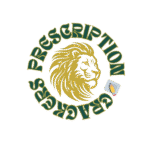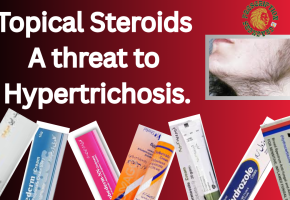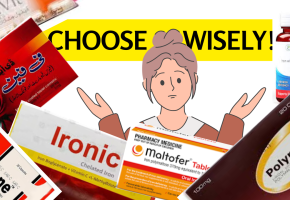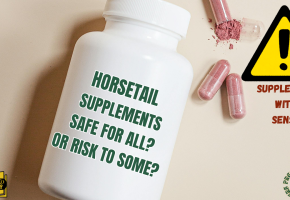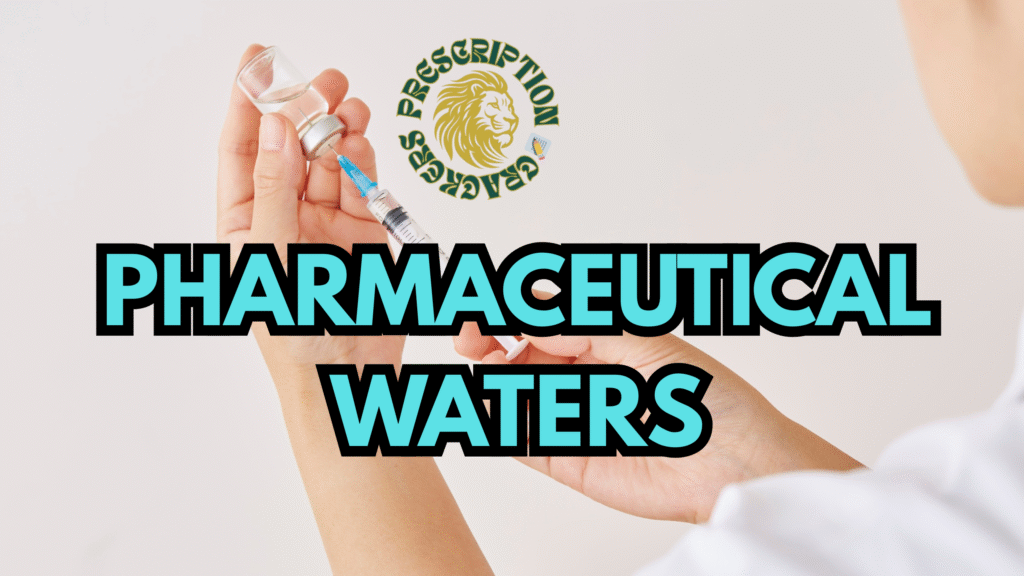Top Medicated Soaps Brands in Pakistan👩⚕️
Learn about the top medicated soaps brands in Pakistan used for daily use on dry skin, oily skin and acne prone skin, for skin lightening and for the treatment of bacterial infections, fungal infection and scabies. Along with the key ingredients used in these soaps!
The word “medicated” bring an image of some disease associated treatment in our mind. But the use of medicated soap is not just limited to the treatment of infection rather it has become the most important part of our life by bringing moisturizing, cleansing and depigmenting effects as well.
Medicated soaps are also cost effective than the medicated face washes and anti-infective body washes, providing almost same therapeutic benefit.
So, here we are going to unlock the top most medicated soaps in Pakistan which can be used for:
Medicated soaps for Dry and Sensitive Skin:
Medicated soap | Key Ingredients | Purpose |
XEROWET-V | Mineral oil & vegetable oils | For dry and sensitive skin |
HYDROMED | Petroleum jelly, olive oil, coconut oil, aloe vera | Deep moisturizing for dry skin |
DERMA CARE BAR | Mineral oil, vegetable oils, almond and arachis oils | Soothes and nourishes dry skin |
HYDROLATUM BAR | For dry skin | |
SOLO PLUS | Glycerine enriched | Soap with normal pH, moisturizing |
OILUM MOISTURIZING SOAP | Collagen, and olive oil | For dry and aging skin |
Medicated Soaps for Oily/Acne Prone Skin
Medicated Soap | Key Ingredients | Purpose |
ACNEX | Removes sebum, acne treatment | |
ACNE PLUS | For all types of acne | |
ACNE WIPE BAR | For acne and oily skin | |
ACNE WASH SOAP | 5% Benzoyl Peroxide in a soap-free bar | For acne and oily skin, Effectively cleanse without over drying and irritation. |
ACNE-EASE BAR | Tea tree oil, coconut and palm oil | For all types of acne |
BENZACIDE | Benzoyl peroxide 4.5% | For whiteheads, blackheads, sebum control |
JF SKIN SOLUTION | Palmitic acid, salicylic acid, etc. | For oily, acne-prone skin |
DERMACID-AF | Salicylic acid + sulfur | Anti-acne and anti-fungal |
ZN BAR | Zinc pyrithione, sulfur | For dandruff, acne, scabies |
AQIQ BAR | Anti-acne and anti-fungal | |
SNS BAR | For seborrhea, acne, fungal infection |
Medicated Soaps For Skin Brightening and depigmenting
Soap Name | Key Ingredients | Purpose |
G WHITE | Glutathione, licorice, Vitamin C & E | Whitening, antioxidant |
GLUTA-MAX / GLUVIT-S | Reduced glutathione, grape seed oil, omega 3,6,9, jojoba oil, soya glycerin | Skin lightening, moisturizing |
HITONE SOAP | Kojic acid, cucumber extract, vitamin E, aloe vera | Whitening, soothing, Antioxidant |
Anti-infective Medicated Soaps:
Medicated Soap | Key Ingredients | Purpose |
SNS BAR | Fungal infection, seborrhea, scabies | |
PROTEXION | Benzyl salicylate, neem extract | Antibacterial soap (normal pH) |
DERMACIDE | Scalp psoriasis, seborrheic dermatitis, acne | |
DERMACIDE-AF | Anti-acne and antifungal | |
MALFUR | Salicylic acid, sulfur, menthol | Keratolytic, antiseptic, antipruritic |
AQIQ BAR | Anti-acne and antifungal | |
ZN BAR | Zinc pyrithione, sulfur | For scabies, dandruff, infections |
MALFUR | Salicylic acid, sulfur, menthol | Keratolytic, antiseptic, antipruritic |
Key-Ingredients of Medicated Soaps: Clinical Pearls!🧑⚕️
Glycerin:
- Glycerin also known as glycerol is formed naturally through the alcoholic fermentation of sugars.
- It acts as humectant when applied topically, meaning it attracts and retain moisture in the skin and thus prevents the dryness.
- It is one of the most popular skin care ingredient used in cosmetics, and other beauty products.
Mineral Oil:
- Mineral oil, a clear, colourless, oily liquid that is a by-product of the distillation of petroleum.
- It is used orally as a laxative and topically as emollient.
- Being light-weight in nature it is often used in baby lotions, cold creams, ointments & personal care products, due to its ability to help reduce water loss from skin and keep it moisturized.
Collagen:
- Collagen is a fibrous protein highly demanded in biomedical and cosmetic industries.
- Though mostly available in oral formulations like capsules and oral powder, Some, topical creams, lotions and soaps also have collagen incorporated in them.
- It is highly known for its moisturizing and anti-aging effect especially when taken orally. Hydrolysed form of collagen best absorbed topically as well as orally.
- Topically applied collagen peptides can penetrate the skin through three potential pathways. The first way is through the sweat ducts, the second is through the hair follicles and sebaceous glands, or the third way consists of penetration directly across the stratum corneum (SC)
Vitamin E
- Vitamin E is one of the top most vitamin that is widely used for its anti-oxidant effect (neutralize free radicals).
- It is almost incorporated in every other cosmetic and beauty product offering benefits like protecting the skin from free radicals and UV damage, reducing signs of aging, and improving skin hydration and barrier function.
Titanium dioxide
Titanium dioxide is often used in cosmetic products like creams, sun blocks and soaps etc. While generally considered safe, there are some concerns regarding its potential toxicity, particularly with nanoparticle forms. Its inhalation as the powders have also raised some respiratory concerns and Some countries have even banned the use of titanium dioxide in oral products due to the risk of diabetes.
Salicylic acid:
- Salicylic acid is a medicated agent which is often present in topical products for the prevention and treatment of acne and other skin disorders like warts, psoriasis, calluses & corns.
- Salicylic acid acts by breaking down layers of thick skin and exfoliates the skin.
- It also opens the clog pores.
Precipitated sulfur:
- Sulfur is an ingredient often used in medicated creams, lotions and other skincare products for the treatment of acne, and other skin disorders like dandruff, Hayfeeder, common cold, scaly and red skin patches (seborrheic dermatitis), Poison ivy, and sumac infections. It has strong ability to kill bacteria, fungus and scabies, thus also acts as a bactericidal, fungicidal and scabicide. It also possesses keratolytic action.
- Precipitated sulfur and colloidal sulfur are used, in form of lotions, creams, powders, soaps, and bath additives, for the treatment of acne vulgaris, acne rosacea, seborrheic dermatitis and scabies.
Precipitated sulfur | Colloidal sulfur |
· Preparation: The precipitated also known as “sulfur praecipitatum” or milk of sulfur. is obtained by boiling ordinary sulfur, along with lime water or other alkali or alkaline solution which forms calcium polysulfide solution which is then, filter & treated with Hcl (hydrochloric acid). Acid breaks polysulfide, releasing elemental sulfur as a coarse precipitate.
· Particle size: Particle size smaller than ordinary sulfur, but larger than colloidal sulfur. · Activity: More active than ordinary sulfur due to its finer subdivision, making it suitable for ointments, creams and soap etc. | · Preparation: Colloidal sulfur also known as sulfur colloid or fine sulfur. It is produced by the same lime sulfur (polysulfide solution) but instead of acid, we add protein (like gelatin or casein). Why protein? Protein acts as a stabilizing agent or protective colloid — it slows down particle aggregation, leading to much finer sulfur particles. Then, you may reprecipitate from alkaline solution using ethanol or acetone to refine it further. Acetone is a non-solvent for sulfur. When added, it forces sulfur out of solution, forming ultra-fine particles. · Particle size: Colloidal sulfur has the smallest particle size among the common forms of sulfur, forming milky colloidal solutions in water.
Colloidal sulfur possesses the highest activity due to its very fine particle size, leading to potential therapeutic benefits in various applications. Colloidal sulfur solutions are known for their strong affinity to water, making them easily dispersed and stable and thus often formulated in the form of lotions, emulsions and suspension etc.
|
Mechanism of action:
Sulfur is converted to hydrogen sulfide (H2S) through reduction, partly by bacteria. H2S has a lethal action on bacteria (possibly including Propionibacterium acnes) which plays a role in acne, fungi, and parasites such as scabies mites.
It is also thought to interact with cysteine in the stratum corneum, causing reduction of sulfur to hydrogen sulfide.
- Sulfur is available in concentrations of 3% to 8% in OTC acne formulations.
Benzoyl peroxide:
- Benzoyl peroxide is an antibacterial and anti-inflammatory agent used for the symptomatic treatment of mild to moderate acne vulgaris and rosacea.
- It is available in the form of single active product or in combination with the erythromycin, clindamycin and adapalene for the treatment of acne.
- Though the therapeutic index is wide, Still the patients may feel skin peeling effects along with redness, dryness and irritation.
- The chances of Sunburn is also present, so, the patient is directed to cover the area of application when being outside in the sun.
- Benzoyl peroxide is also indicated in combination with tretinoin for the treatment of acne vulgaris in patients ≥9 years .
- A triple-combination therapy including both clindamycin and adapalene is also available and indicated for the treatment of acne vulgaris in patients ≥12 years of age
- Mechanism: After application, the peroxide bond is break down, allowing benzoyloxy radicals to non-specifically interact with proteins. This process decreases keratin and sebum around follicles, as well as increasing turnover of epithelial cells
- The duration of action is short due to which the reactive free radical metabolite converts to the inactive metabolite.
Calendula extract:
- Calendula flower is commonly used for wounds, rashes , infections, inflammation, and many other conditions.
- It is rich in flavonoids and other strong anti-oxidants.
- When applied topically, it is mostly safe in most of the patients
Sulphonated Surfactant blend:
What It Means:
- Sulfonated: The surfactant contains sulfonic acid groups (–SO₃H) or their salts, making it water-soluble and effective in cleansing.
- Surfactant: A compound that lowers the surface tension between two substances (e.g., oil and water), enabling cleansing, emulsifying, foaming, or spreading.
- Blend: A formulation combining multiple surfactants (sometimes with other types like sulfates, betaines, amphoterics) to enhance cleaning, foaming, mildness, or stability.
So, a sulfonated surfactant blend means a mixture of surfactants that includes one or more sulfonated compounds which is the surfactants containing the sulfonic acid group (-SO₃H) or its salts (usually sodium salts). These are anionic surfactants, meaning they carry a negative charge when dissolved in water, which helps them interact with oils and dirt, allowing them to be rinsed away.
Zinc Pyrithione:
- Pyrithione zinc, or zinc pyrithione or zinc pyridinethione is commonly found as an active ingredient in OTC topical products such as shampoos and soaps for the treatment of dandruff and seborrheic dermatitis.
- It acts by increasing the cellular concentration of copper, and damaging iron-sulfur clusters of proteins essential for fungal metabolism and growth.
- Particularly acts against Malassezia, which is the most common fungi found on scalp. In patients with dandruff, treatment with pyrithione zinc decreases the amount of fungus on the scalp, which reduces the amount of free fatty acids, thereby reducing the flaking and itching of the scalp.
Glutathione:
- Glutathione is a low molecular weight thiol-tripeptide that possesses strong ant-oxidant properties.
- It is widely declared as a skin lightening agent and available in topical, oral and injectable form.
- The efficacy of glutathione for its skin lightening effect remains controversial, though some studies have shown promising skin lightening effect by glutathione, still conclusive research is required.
- Beyond skin lightening, glutathione also possesses anti-aging properties. It is believed that glutathione improves skin elasticity, reduce wrinkles, and enhance overall skin health by mitigating oxidative damage as it is a strong anti-oxidant.
- Several additional studies have examined the synergistic effects of glutathione with other antioxidants, such as vitamin C and alpha-lipoic acid, suggesting increased efficacy in reducing oxidative stress & improving skin health.
- The topical and oral forms of glutathione are safer as compared to the intravenous form. Its use via intravenous route is often discouraged in many countries due to various side effects.
- Research suggests that glutathione is not enough orally bioactive, & as a result of this, very little of oral glutathione tablets or capsules is actually absorbed by the body.
Kojic acid:
- Kojic acid prevents the formation of tyrosine, which is an amino acid, needed to produce melanin-a pigment that imparts color to the hair, skin, and eye. So, as kojic acid inhibits the production of melanin, it is declared to have a skin lightening effect.
- It is available as a single agent, however, mostly comes in combination with other skin lightening or depigmenting agents, used for the treatment of melasma and hyperpigmentation.
- Usually considered to be safe when used as 1% of concentration.
- However, some people also experience redness, itching, rashes, swollen skin, or pain and discomfort. These side effect are more common in the individuals with sensitive skin or when kojic acid is used above 1% of concentration.
- Protection from the sunlight is required while using kojic acid products for a long period of time as it can cause sensitivity to sunlight and increases the chances of sunburn.
- kojic acid is often recommended to be use on the area of hyperpigmentation and scarring but not highly endorsed to lighten your natural skin complexion.
References:
- Safrin Skincare. (n.d.). Acnewipe cleansing bar soap 75gm. Retrieved July 21, 2025, from https://safrinskincare.com.pk/product/acnewipe-cleansing-bar-soap-75gm/
- Derma Techno. (n.d.). Acne wash soap. Retrieved July 21, 2025, from https://dermatechno.com/products/acne-wash-soap#key-ingredients
- Encyclopedia Britannica. (n.d.). Mineral oil. In Britannica.com. Retrieved July 21, 2025, from https://www.britannica.com/technology/mineral-oil
- International Food Information Council. (n.d.). What is glycerin? Retrieved July 21, 2025, from https://ific.org/resources/articles/what-is-glycerin/
- Hamid, A. A., Aiyelaagbe, O. O., Usman, L. A., Ameen, O. M., & Lawal, A. (2010). Antioxidants: Its medicinal and pharmacological applications. African Journal of Pure and Applied Chemistry, 4(8), 142–151. https://pmc.ncbi.nlm.nih.gov/articles/PMC7070905/
- Draelos, Z. D. (2012). Active agents in common skin care products. Journal of Clinical and Aesthetic Dermatology, 5(12), 32–36. https://pmc.ncbi.nlm.nih.gov/articles/PMC3423755/
- Levin, S. (2025, June 6). Titanium dioxide food additive potentially toxic, US researchers say. The Guardian. https://www.theguardian.com/us-news/2025/jun/06/titanium-dioxide-food-additive-toxic
- Cleveland Clinic. (n.d.). Salicylic acid (topical). Retrieved July 21, 2025, from https://my.clevelandclinic.org/health/drugs/20341-salicylic-acid-topical-gel-cream-lotion-solution
- DrugBank. (n.d.). Sulfur (DB09353). Retrieved July 21, 2025, from https://go.drugbank.com/drugs/DB09353
- ScienceDirect. (n.d.). Sulfur – medicine and dentistry. Retrieved July 21, 2025, from https://www.sciencedirect.com/topics/medicine-and-dentistry/sulfur
- National Institute of Informatics (Japan). (n.d.). CRID: 1130007889660236948. Retrieved July 21, 2025, from https://cir.nii.ac.jp/crid/1130007889660236948
- DrugBank. (2025). Benzoyl peroxide (DB09096). Retrieved July 22, 2025, from DrugBank website: https://go.drugbank.com/drugs/DB09096
- WebMD. (n.d.). Calendula: Uses and safety. Retrieved July 21, 2025, from https://www.webmd.com/vitamins/ai/ingredientmono-235/calendula
- MedlinePlus. (n.d.). Calendula. Retrieved July 21, 2025, from https://medlineplus.gov/druginfo/natural/235.html
- Williams, D. F., & Schmitt, W. (Eds.). (2000). Poucher’s perfumes, cosmetics and soaps (10th ed.). Springer. https://doi.org/10.1007/978-94-011-4386-8
- Draelos, Z. D. (2016). Glutathione for skin lightening: An update. Pigment International, 3(1), 4–6. https://journals.lww.com/pigi/fulltext/2017/04010/glutathione_for_skin_lightening__an_update.2.aspx
- Weschawalit, S., Thongthip, S., Phutrakool, P., & Asawanonda, P. (2017). Glutathione and its antiaging and antimelanogenic effects. Clinical, Cosmetic and Investigational Dermatology, 10, 147–153. https://www.ncbi.nlm.nih.gov/pmc/articles/PMC7070905/
- (n.d.). Glutathione (DB00143). Retrieved July 21, 2025, from https://go.drugbank.com/drugs/DB00143
- Handog, E. B., Datuin, M. S., & Singzon, I. A. (2016). An evidence-based review on glutathione as a skin-lightening agent. Dermatologic Surgery, 42(4), 379–392. https://journals.sagepub.com/doi/10.1177/1091581810385956
- Phetcharat, L., Wongsuphasawat, K., & Winther, K. (2022). Oral supplementation of glutathione: Effects on skin properties. Cosmetics, 9(3), 64. https://www.mdpi.com/2079-9284/9/3/64
- Weschawalit, S., et al. (2019). Glutathione and its effects on skin: A review. Journal of Clinical and Aesthetic Dermatology, 12(10), 24–29. https://pubmed.ncbi.nlm.nih.gov/27088927/
Disclaimer:
This article is for informational and educational purposes only. It does not substitute for professional medical advice, diagnosis, or treatment. Always consult a qualified healthcare provider before starting any medication.
